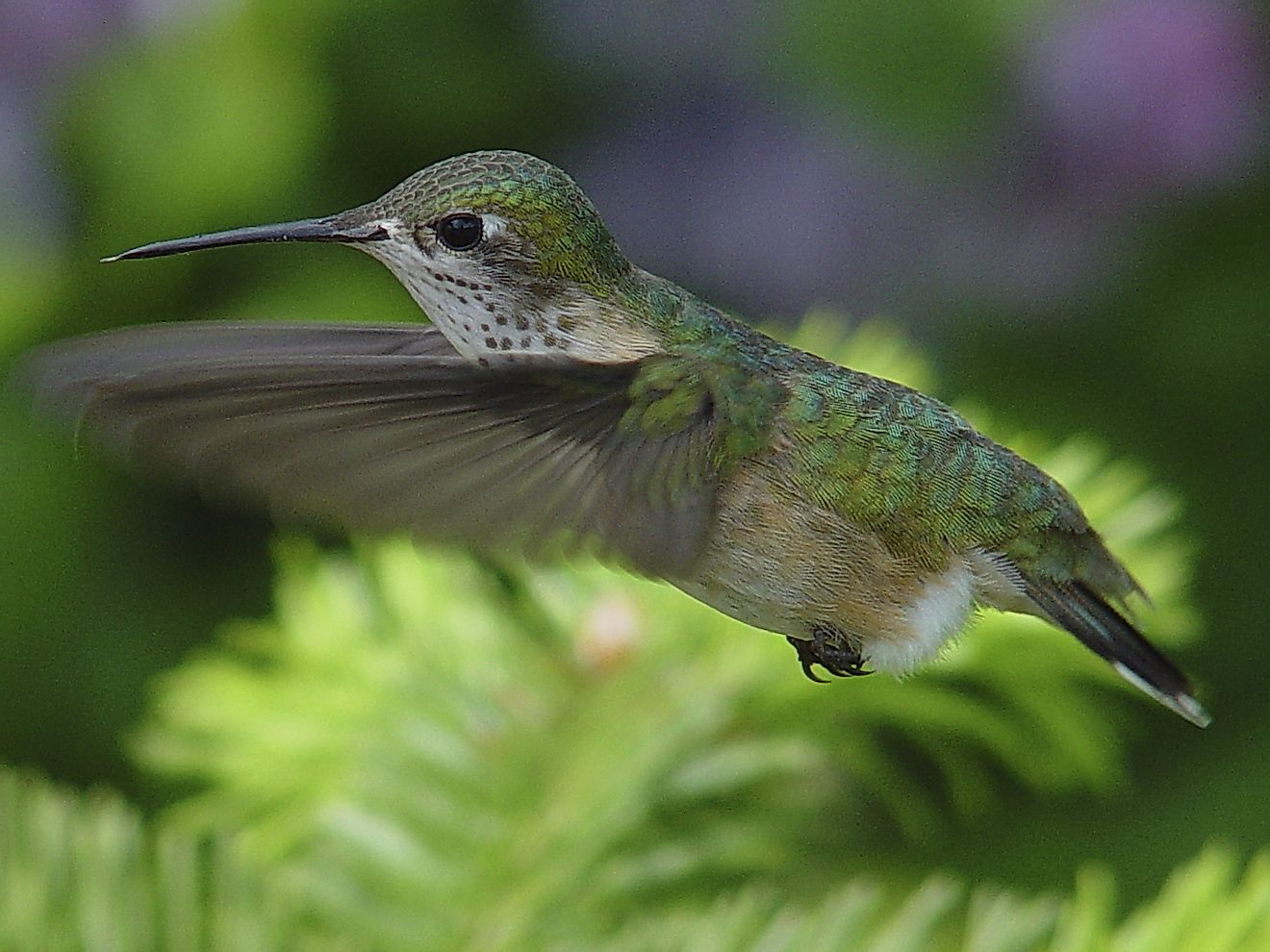Calliope Hummingbird Facts: Animals of North America

5. Physical Description
The calliope hummingbird is believed to be the smallest bird in North America. In terms of their size, an adult calliope hummingbird tends to measure between only around 2.8 and 4 inches (7 and 10 centimeters) in length, has a span of about 4.33 inches (11 centimeters) across the wings, and weighs under a tenth of an ounce (between 2 and 3 grams). When it comes to their appearance, these birds are glossy green on the crown, with dark bodies and white underparts. They have a relatively short bill and tail. Adult females and immatures have a pinkish wash over their flanks, a dark tail with white tips, and dark-colored streaks on their throats. On the other hand, the adult males have wine-red colored streaks on their throats, a dark tail, and green flanks.
4. Diet
In terms of their diet, the omnivorous calliope hummingbirds are both insectivores and nectarivores. The birds are known to prey and feed on insects. For this, they initially hawk the insects, and then zoom out from a perch to catch them in the air. The smaller insects that they eat are inclusive of ants, beetles, bees, flies, and wasps. Apart from that, observations of this bird’s behavior has shown that they also feed regularly at sap wells or holes in trees that are created by other sapsuckers. They basically lick out nectar from flowers by using their long tongues. It is believed that they regularly visit red tubular shaped flowers, although they feed on blue, yellow, white and purple flowers as well.
3. Habitat and Range
The breeding habitat of the calliope hummingbird is believed to vary greatly in terms of altitude, though they generally appear to prefer open shrub areas. It is normal for nesting to occur at higher altitudes, particularly in the mountains. Nest heights typically tend to vary from 2 to 65 feet above the ground. Open montane forests, alder thickets, willows and mountain meadows are used by the bird as breeding grounds. They may also be seen in deserts, semi-desert regions, chaparral and lowland brushy areas during winter and migration. From what is known, calliope hummingbirds nest in western North America from Southern British Columbia to southwestern Alberta, through Washington, Nevada, Oregon and California to northern Baja California and east to Wyoming, Utah and Colorado. During the winters, they can also be seen in northern to central Mexico. They move mainly through Arizona and New Mexico and northern Mexico during spring and summer.
2. Behavior
The overall behavior of calliope hummingbird resembles that of may other species of hummingbirds. These are solitary migratory birds that only interact with individuals of the same species during mating season. However, they normally share their range with the rufous hummingbirds. The calliope hummingbirds make long-distance migrations every year from their summer range to their winter range and back. As they make stops to refuel on nectar, there is a good chance that they may be sighted in a variety of locations along their routes.
1. Reproduction
When it comes to reproduction, it is normal for the adult males to arrive on the breeding ground before females, during mid-April and early May. The males are rather vigorous in defending their nesting territories where they continue to breed with many females, which means they are polygynous. The males pursue females during the breeding season to which the females reply by either fleeing or hiding. When catching a female, the adult male exhibits territorial displays such as buzzing, diving, hovering and vocalizing. By the time the young hatch from the eggs, the males vacate the breeding grounds and take no part in raising the young. On the other hand, the females build an open cup nest in a conifer tree under an overhanging branch. They may also use alder and apple trees depending on their habitats. These constructions are important, as the female may use the same nest repeatedly over the course of several years. The female then lays two eggs between late May and early July, which are then incubated for 15 to 16 days. The young typically start flying 20 days after hatching.











